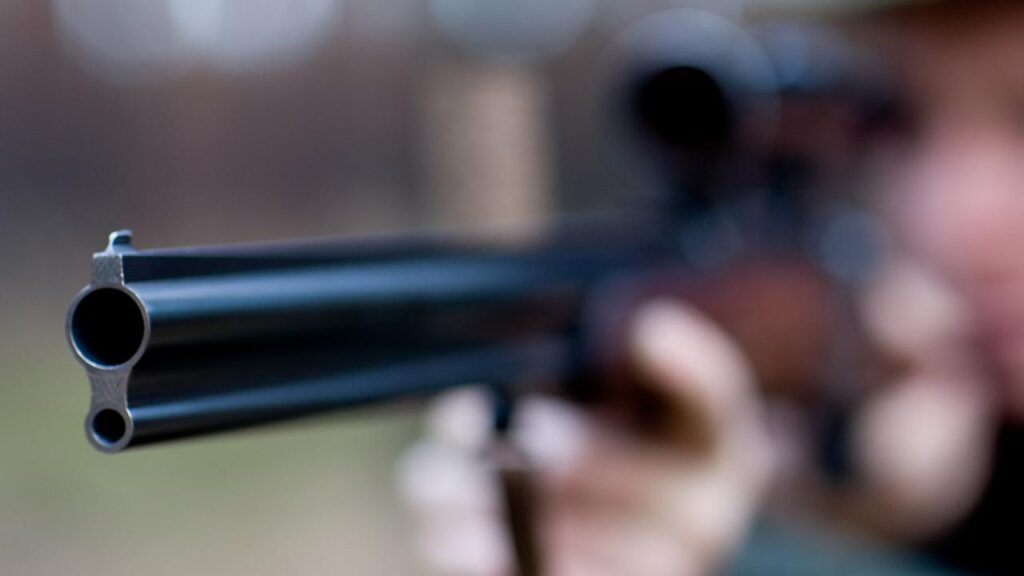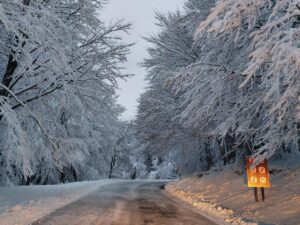
Wild animals are hunted illegally in Germany with guns, crossbows and snares.
Source: dpa
Everyone in Wiesbaden knows it: Leichtweißhöhle di Nerotal. Its name comes from the poacher Heinrich Anton Leichtweiß, who used the cave as a shelter from 1789 to 1791 to hide from his pursuers. The story was romanticized and became a minor tourist attraction in the city.
Europe is a profitable market for bird smugglers. Exotic birds such as parrots or their eggs are smuggled out of countries such as Brazil. Without paying attention to endangered species.
31 August 2025 | 28:44 min
But the days of seemingly harmless poachers are over as late as January 31, 2022. Two young police officers – a 29-year-old senior inspector and a 24-year-old police trainee – inspected vehicles on a district road near Ulmet in the Kusel district of Rhineland-Palatinate. There are two poachers in the car. Police officers shot.
Investigations revealed that one of the men had been poaching at more than 500 hunting grounds. The main defendant has now been legally sentenced to life in prison.
Organized trading in the game
Poaching in Germany is not a marginal phenomenon. Starting from the illegal shooting of protected species to the organized trade in game animals. The perpetrators often operated at night, knew the terrain and were armed.
Very few people know this: Drivers can also be poachers. In Germany, hunting laws are regulated in a system of hunting districts. Territory owners have exclusive authority to take control of animals subject to hunting laws. It doesn’t matter whether the animal is alive or dead.
This was explained by Dr. Heiko Granzin from the law firm Die Jagdrechtskanzlei: “According to Article 292 of the Criminal Code, anyone who stalks a game animal, catches it, kills it or takes it over for himself or a third party commits illegal hunting. The driver who puts the deer carcass in the trunk of the car has the right to take it.” This is not a trivial offense: you could face a fine and, if repeated, even up to three years in prison.
The German Hunting Association sees a slight increase in poaching and relies on statistics from the Federal Criminal Police Office: “Since 2012, the number of recorded cases has increased by 35.3 percent – from 864 to a new high of 1,169 cases in 2024,” explained press spokesman Torsten Reinwald. The clearance rate is particularly worrying: “The rate has fallen from 33.3 percent in 2014 to just 28.6 percent in 2024.”
“Wildlife doesn’t have a lobby,” says Tamara. Wildlife rangers rescue foxes, hedgehogs and raccoons.
June 30, 2024 | 27:14 min
The number of unreported cases of poaching is quite high
According to experts, the number of unreported cases is quite high. Melina Sowah, WWF wildlife crime expert, also confirms this: “There is no centralized reporting point for wildlife crime in Germany and therefore no national statistics.” A big problem in the fight against poachers. Brutality is increasing, including:
Since 2012, an average of one in five poaching cases involves the use of a firearm – and the trend continues to increase.
Torsten Reinwald, German Hunting Association
“In addition to firearms, bows, snares and poison baits are also used to kill wild animals,” said Reinwald.
Significant consequences for otters and red kites
Triggers for illegal hunting are greed for profit, territorial disputes, jealousy of trophies, and seizure of game animals as food. Although many people think of deer and wild boar when they think of poaching, WWF sees other species as its focus: lynx, wolves, sea eagles, red kites, otters, and otters. “In small populations, the loss of individual animals can have significant consequences – such as jeopardizing the reintroduction process or genetic impoverishment,” Sowah warns.
What can be done to protect biodiversity? Children learn this at Nordhorn Zoo School, where biodiversity is brought to life for both children and adults to enjoy. They even won prizes for it.
May 22, 2025 | 1:49 min
Therefore, poaching endangers not only specific species, but also the ecological stability of entire regions.
Melina Sowah, WWF
To track this, WWF Germany is working on an EU-funded project together with 13 partners from police, research, authorities and nature conservation organizations in Germany and Austria. The aim of the so-called wildLIFE crime project is to better monitor wildlife crime, train authorities, safeguard evidence in court and expand forensic capacity across Germany.
A good year for butterflies
:Hope for butterflies?
They still fly across the country – colorful, light and seemingly weightless. Butterflies are threatened. However, the current tally offers hope.
by Andreas Ewels
Warning: Do not intervene alone
The German Hunting Association relies on a district system to prevent poaching: “The advantage is that we have responsible hunters on site who know their districts and what happens there,” explains Reinwald. At the same time, the association firmly warns hunters not to intervene: “Your own safety must always be a priority.”
WWF warns that anyone who finds a dead or injured wild animal should report this first to local police or the responsible nature conservation authority. “Suspicious baits, traps or other abnormalities can be reported via the national poaching hotline at www.wildlifecrime.info,” Sowah added.
Consistent monitoring will help
Poaching remains a serious threat to species conservation and ecological stability. The increasing willingness of many poachers to use violence shows that violence is not just about protecting animals, but also human safety.
To address this effectively, the comprehensive monitoring base must be significantly improved. This is the only way to detect illegal activity early and eradicate it consistently.
Andreas Ewels is an editor on ZDF’s environmental editorial team





